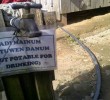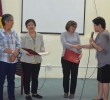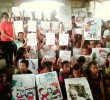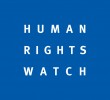“The Zamboanga City government should ensure that the rights of the IDPs (internally displaced persons) in the Cawa-cawa evacuation camp are protected as the city government acts to relocate them in the coming days,” Phelim Kine, Human Rights Watch deputy director for Asia, said today. “Any relocation should be done peacefully and fully respecting the rights and well-being of IDPs who have already been traumatized by the Zamboanga violence late last year.”
“Any security forces deployed to assist with the relocations should prioritize the rights and safety of the IDPs” Kine said.
“Philippines’ security forces – including any involved in the Cawa-cawa evacuation camp relocation – are obligated to follow the United Nations Basic Principles on the Use of Force and Firearms by Law Enforcement Officials,” Kine said. “Those Principles set out international law on the use of force in law enforcement situations and provide that security forces shall as far as possible apply nonviolent means before resorting to the use of force,” Kine said.
BACKGROUND:
On September 9, 2013, armed men from a faction of the Moro National Liberation Front went into Zamboanga City, in the southern Philippines. Fighting ensued between the men and soldiers from the Philippines military, resulting in the displacement of more than 100,000 people, mostly Muslim residents. Dozens were killed while more than 10,000 homes in at least 5 villages were burned down at the height of the conflict and even when the fighting was declared over three weeks later.
Seven months after the conflict, more than 64,600 IDPs remain in evacuation camps and so-called transitional shelters, with many living with relatives and friends. The evacuation camps at a coastal area called Cawa-cawa and at the Joaquin Enriquez Sports Complex hold more than 20,000 IDPs and they are the worst affected by the squalid conditions, mainly problems with sanitation and hygiene that helped the spread of such diseases as dengue fever, pneumonia and diarrhea. At least 108 have died from these diseases in the evacuation camps of Zamboanga. M0re than 4,000 IDPs have pitched tents on a shoreline in Cawa-cawa, most of them Badjaos, a tribe that depends on the sea for their livelihood.
For more Human Rights Watch reporting on Zamboanga, please visit:
Philippines: Investigate Zamboanga Detainee Mistreatment
http://www.hrw.org/news/2013/
Philippines: Mistreatment, Hostage-Taking in Zamboanga
http://www.hrw.org/news/2013/
Philippines: Residents Trapped in Zamboanga Fighting
http://www.hrw.org/news/2013/










